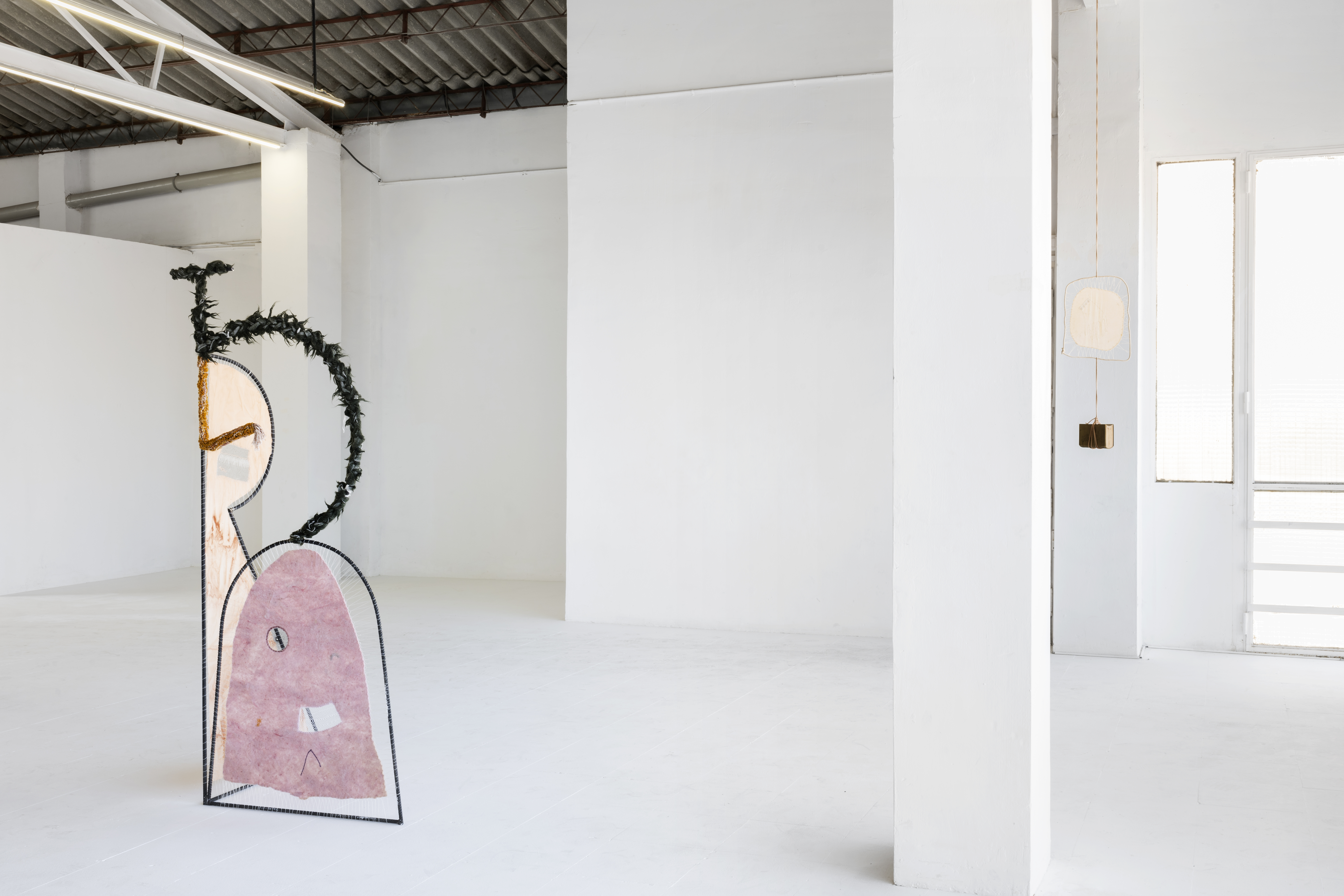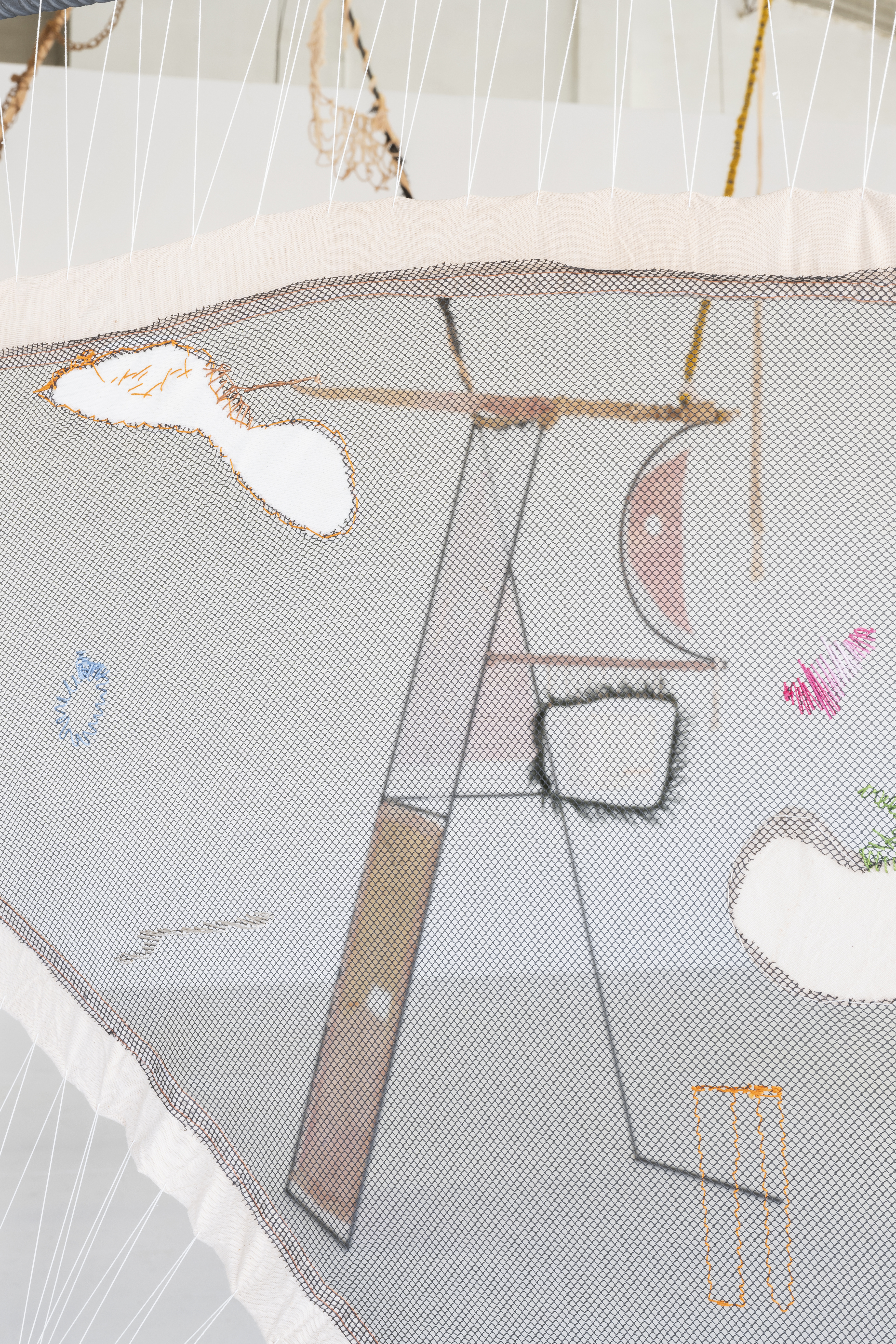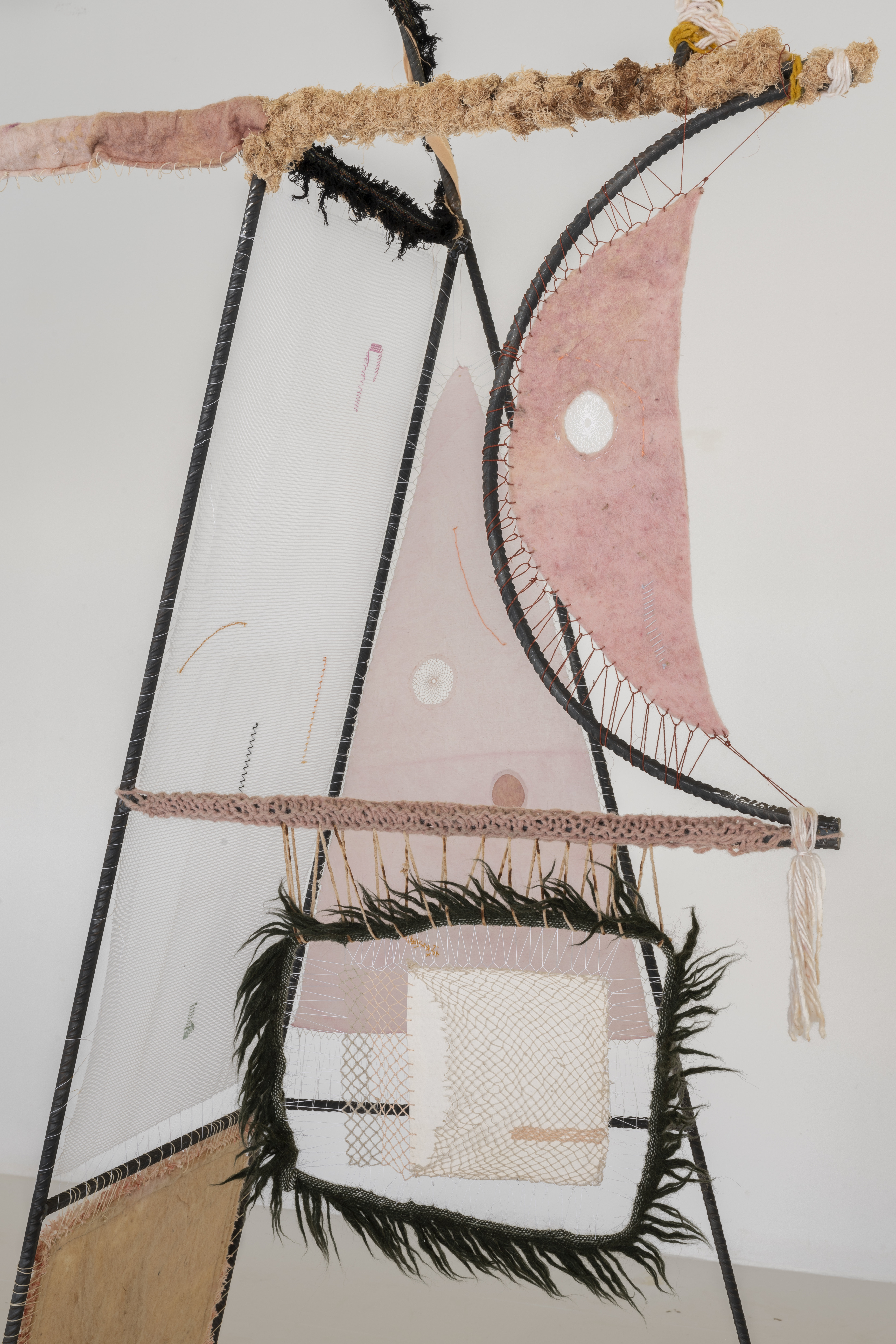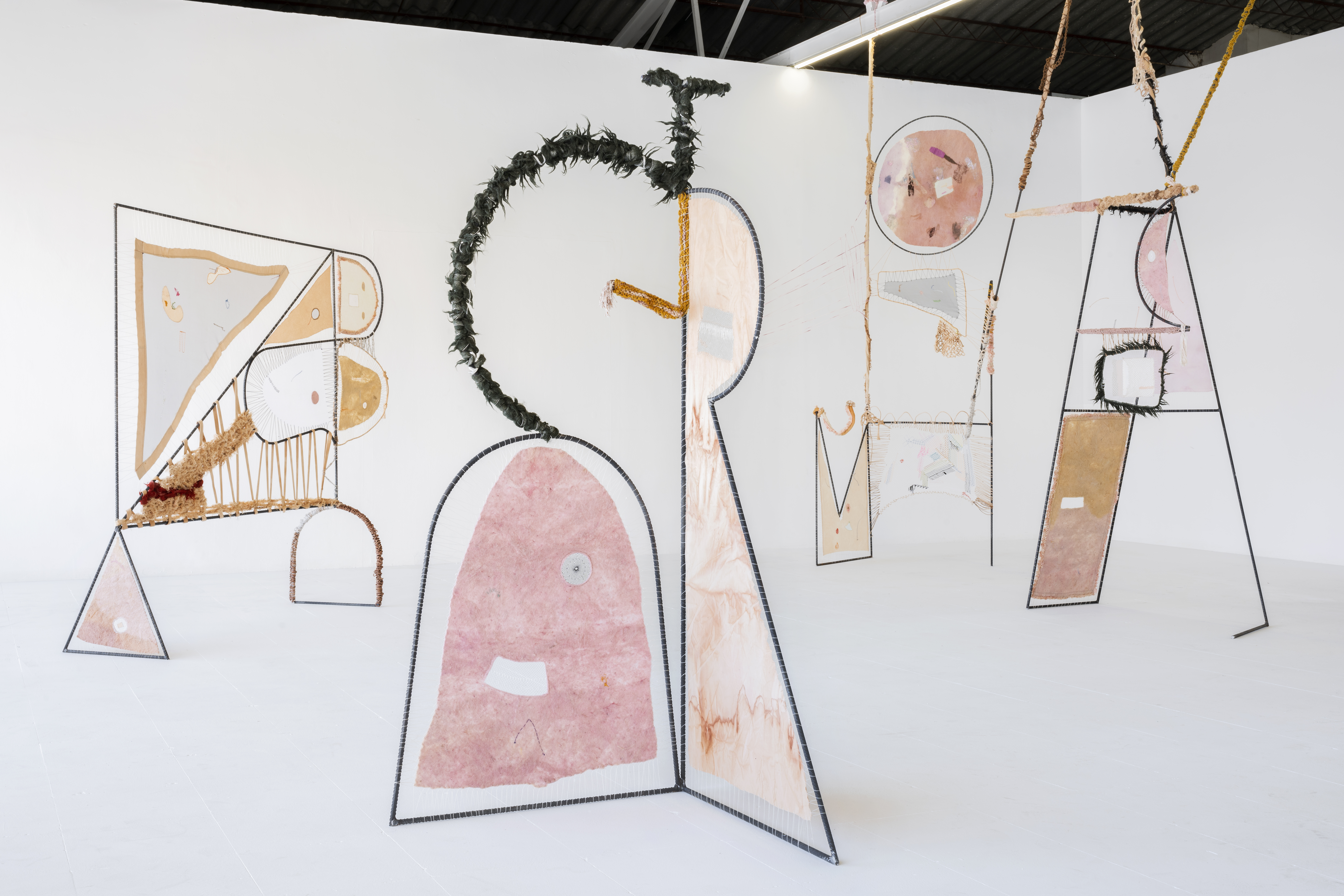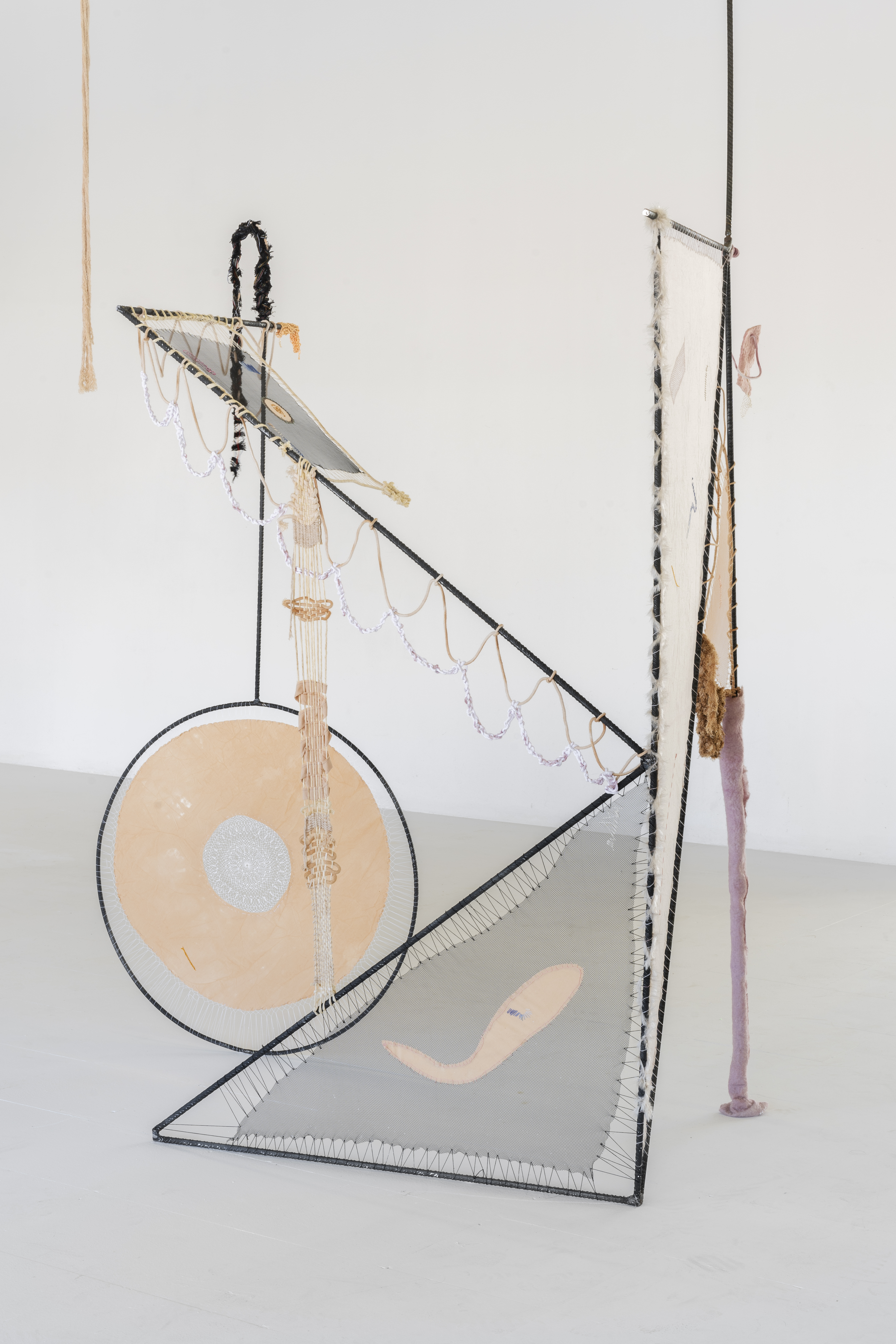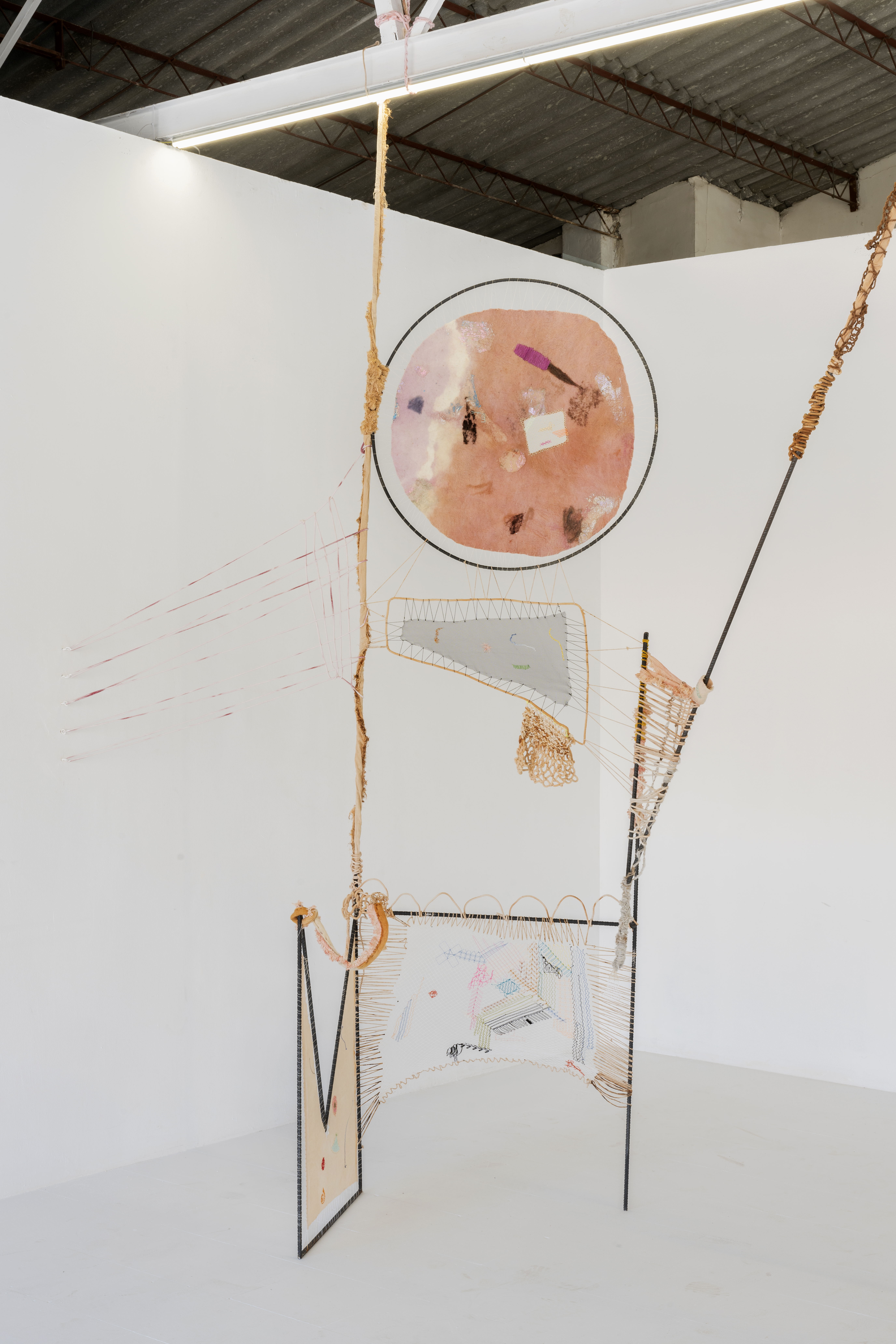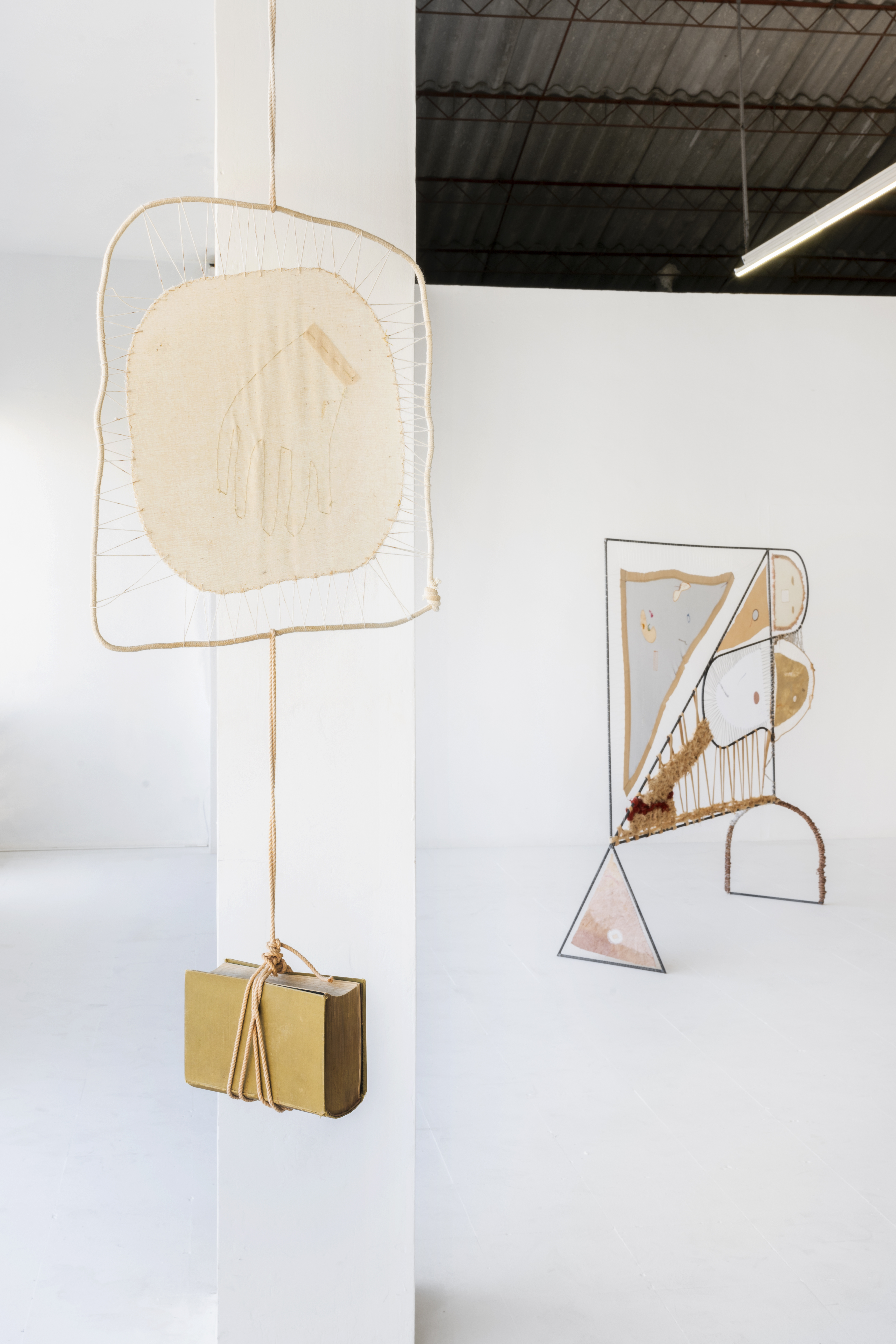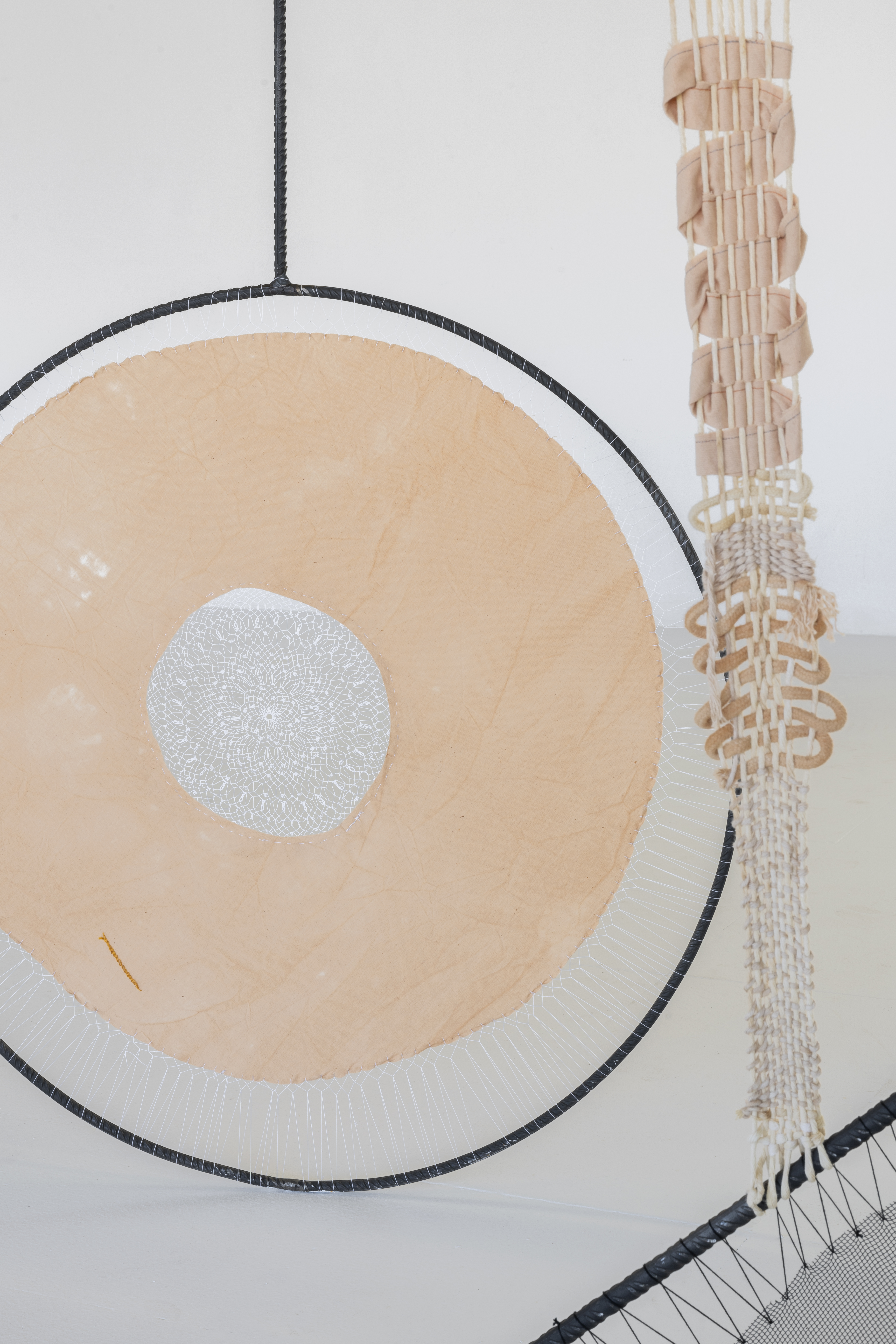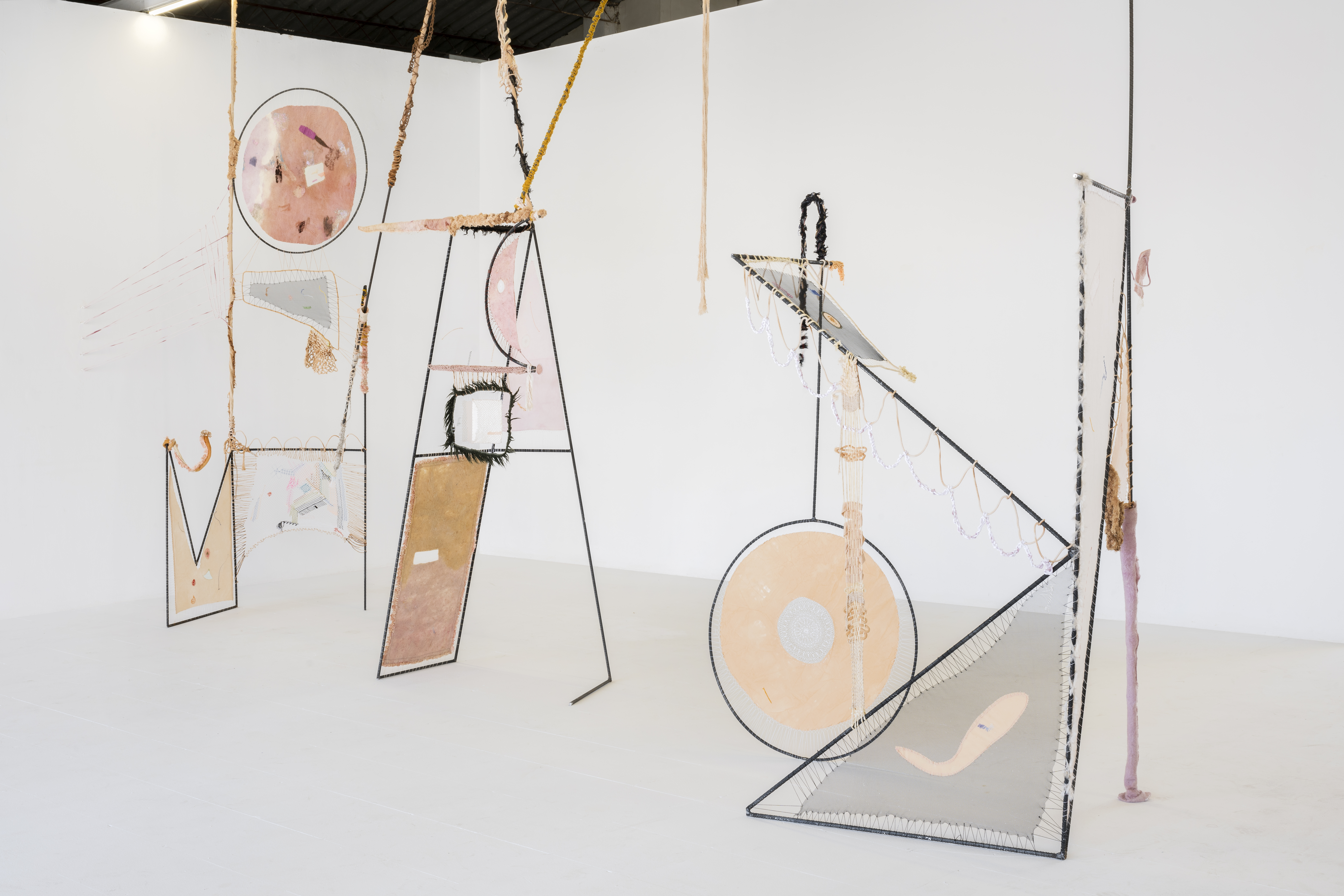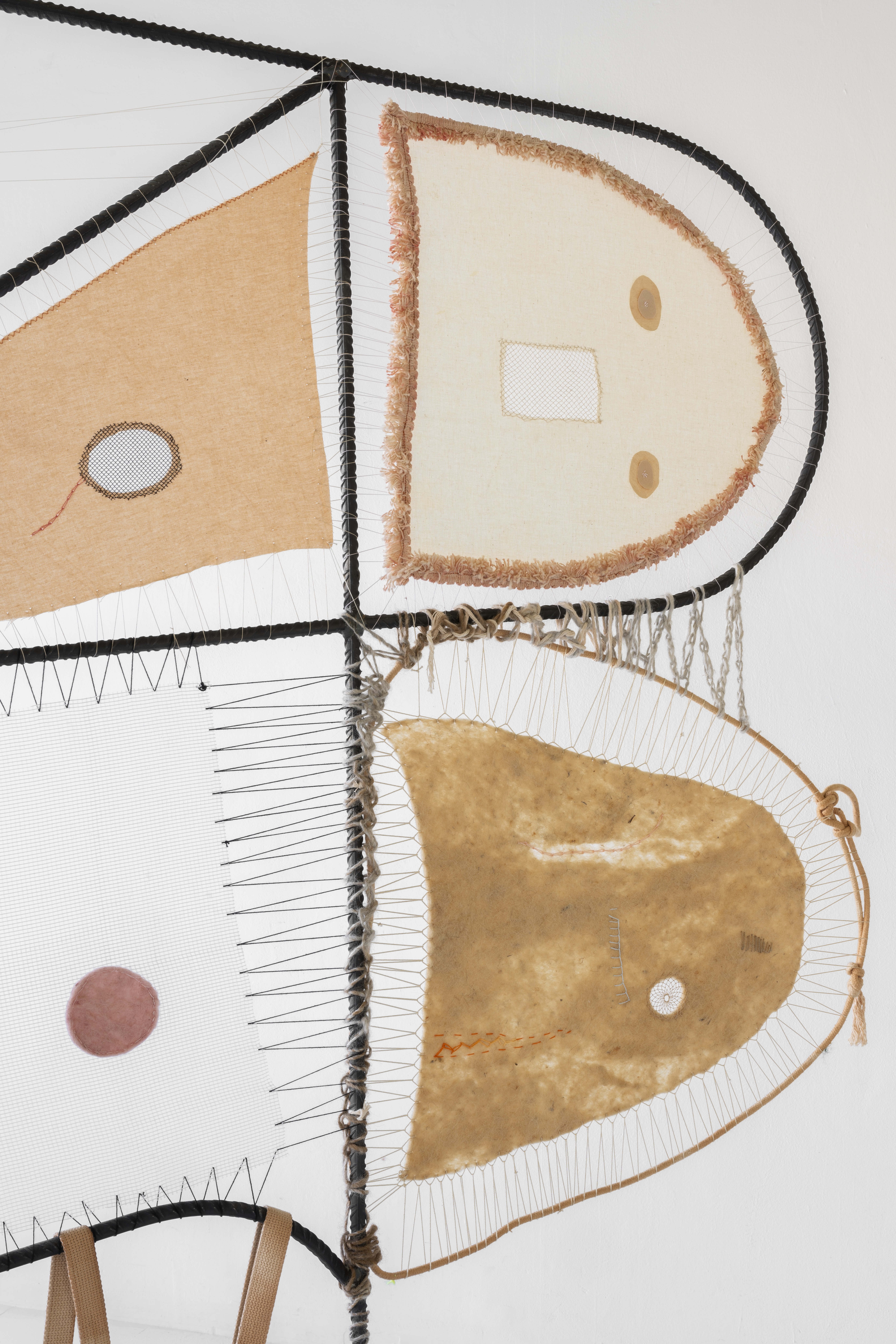Fall
2024
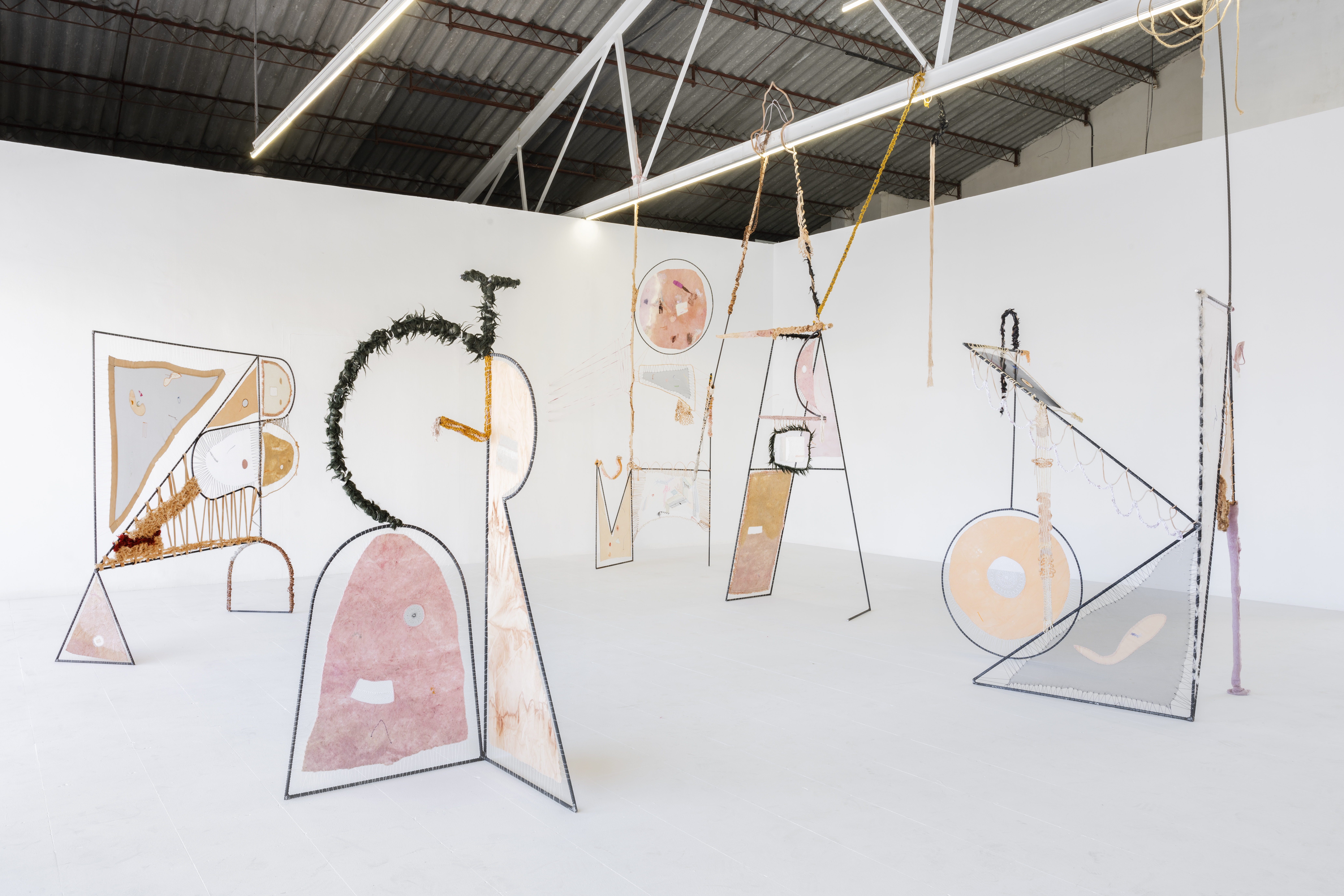
"Dechado de virtudes" is the first solo exhibition by Alejandra Mizrahi (Tucumán, 1981) in Barcelona and in Spain. Mizrahi is a prominent artist in textile experimentation, focusing on continuing textile traditions from the northwest region of Argentina, whether of pre-Hispanic heritage or those established during the colonial period. Mizrahi subjects these traditions to tension and improbable relationships.
Mizrahi has conducted extensive documentation work on the processes of randa, one of the oldest lace-making techniques. Her research has led her to collaborate for over a decade with the community of Randeras from El Cercado, who are now organized into a worker cooperative. They continue to weave this lace, passed down from Castilian women—the so-called "conquerors"—who settled in this territory five centuries ago.
"Dechado de virtudes" stems from a childhood memory of Mizrahi in her family’s fabric store in San Miguel de Tucumán: the artist recalls her fascination with fabric samples, their edges cut in zigzag patterns, around which her family would gather to choose the fabric rolls they would sell the following season. For the artist, the fabric samples expressed potential: they opened the possibility of dialogue, a discussion about either establishing continuity or introducing a rupture, perhaps even reaching a consensus.
With "Dechado de virtudes", Mizrahi deconstructs the central motif that has dominated embroidery samplers since the mid-19th century: the letters of the alphabet. Mizrahi questions the capacity of samplers to trigger action, leading the exhibition to unfold a field of operations around embroidered alphabets, rather than a syntactic or semantic approach to the signs they comprise. "Dechado de virtudes" starts with the alphabet to delve into the texture of the signs, the material weave that participates in the construction of worlds.
Roland Barthes has pointed out that "text" and "textile" share the same etymological root: text comes from the Latin textere, which means "to weave."
Mizrahi has conducted extensive documentation work on the processes of randa, one of the oldest lace-making techniques. Her research has led her to collaborate for over a decade with the community of Randeras from El Cercado, who are now organized into a worker cooperative. They continue to weave this lace, passed down from Castilian women—the so-called "conquerors"—who settled in this territory five centuries ago.
"Dechado de virtudes" stems from a childhood memory of Mizrahi in her family’s fabric store in San Miguel de Tucumán: the artist recalls her fascination with fabric samples, their edges cut in zigzag patterns, around which her family would gather to choose the fabric rolls they would sell the following season. For the artist, the fabric samples expressed potential: they opened the possibility of dialogue, a discussion about either establishing continuity or introducing a rupture, perhaps even reaching a consensus.
With "Dechado de virtudes", Mizrahi deconstructs the central motif that has dominated embroidery samplers since the mid-19th century: the letters of the alphabet. Mizrahi questions the capacity of samplers to trigger action, leading the exhibition to unfold a field of operations around embroidered alphabets, rather than a syntactic or semantic approach to the signs they comprise. "Dechado de virtudes" starts with the alphabet to delve into the texture of the signs, the material weave that participates in the construction of worlds.
Roland Barthes has pointed out that "text" and "textile" share the same etymological root: text comes from the Latin textere, which means "to weave."
Similarly, with the phrase "the textiles are the books the colony couldn’t burn," Mayan communities have claimed textile work as a kind of surface that bears witness to pre-Columbian memory, as well as the oppression and appropriation colonialism inflicted upon it. The phrase also highlights how textiles have historically served as agents of sign transmission, which, however, demand a reading made "with the fingertips," as Elvira Espejo Ayca notes. The textile, in its signifying dimension, embodies a tension between the work of the hands and that of the eyes.
Tension is a central concept in Mizrahi’s work. The ability of both text and textile to act, to influence the formation and deformation of meanings and identities, is found to depend on a material characteristic: elasticity. Without tension, the warp threads would not intertwine with the weft. Without tension, the hand would scarcely trace the lines of letters or link them together. Without tension, words would not come together with meanings, just as semantic shifts in words, brought about by changes in context and communities of use, would hardly be possible.
Mizrahi points to tension as a physical characteristic that textile shares with language, a component that participates in the processes of signification without belonging entirely to the symbolic. Mizrahi’s approach aligns with what Julia Bryan-Wilson has called the "political texture" of textile work. According to the art historian, textile always enters the political in a complex way, as it primarily provides texture to discourse. Textile involves maintaining oppositions in tension—stretched, strained, perhaps to the point of rupture—rather than distinguishing them as simple binaries.
"Dechado de virtudes" identifies textile work as a kind of material and symbolic infrastructure that participates in what we constitute as human. In this sense, Mizrahi takes both the human body and the architectural body of the El Sielo art space as reference scales to hold in tension. "Dechado de virtudes" transforms El Sielo into an intervened place rather than a mere exhibition space.
Tension is a central concept in Mizrahi’s work. The ability of both text and textile to act, to influence the formation and deformation of meanings and identities, is found to depend on a material characteristic: elasticity. Without tension, the warp threads would not intertwine with the weft. Without tension, the hand would scarcely trace the lines of letters or link them together. Without tension, words would not come together with meanings, just as semantic shifts in words, brought about by changes in context and communities of use, would hardly be possible.
Mizrahi points to tension as a physical characteristic that textile shares with language, a component that participates in the processes of signification without belonging entirely to the symbolic. Mizrahi’s approach aligns with what Julia Bryan-Wilson has called the "political texture" of textile work. According to the art historian, textile always enters the political in a complex way, as it primarily provides texture to discourse. Textile involves maintaining oppositions in tension—stretched, strained, perhaps to the point of rupture—rather than distinguishing them as simple binaries.
"Dechado de virtudes" identifies textile work as a kind of material and symbolic infrastructure that participates in what we constitute as human. In this sense, Mizrahi takes both the human body and the architectural body of the El Sielo art space as reference scales to hold in tension. "Dechado de virtudes" transforms El Sielo into an intervened place rather than a mere exhibition space.
* Text and curator: Oriol Fontdevila
